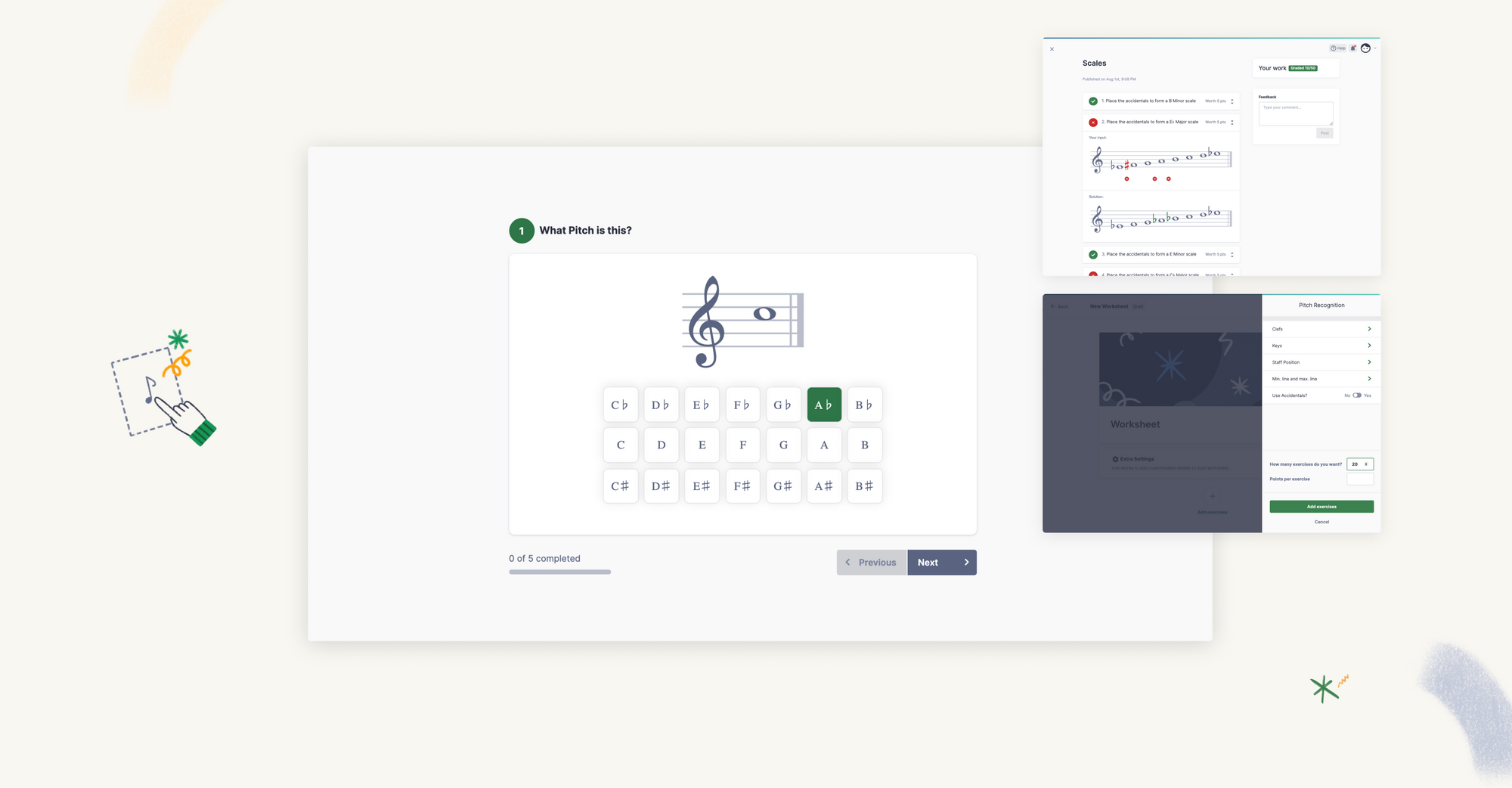Flat for Education has a variety of features designed to give teachers creative, engaging ways to improve their students’ music skills. In this article, we’ll look at Worksheets: creating them, benefits, examples of how teachers are using these assignments, and more!
Worksheets let you assess students’ knowledge of music theory. Easily adaptable to all ages and skill levels, they’re a fast way to check in on how each individual student is doing.
💡Tip: If you finish this article and still have questions, check out our Help page for more technical details on using Worksheets and Flat for Education in general. Here is also a link to our latest video tutorials.
Using worksheets in your classroom
As an educator, you know that creating practical and effective worksheets is essential for engaging your students. With Flat for Education, designing custom worksheets has never been simpler! You can easily select the exercise theme and the number of questions, and customise modes, clefs, keys, and other features as necessary.
But that's not all! The Resource Library takes assignment creation to the next level, allowing you to store and reuse assignments in a snap. This means that you can save time and effort by accessing previous assignments, and assigning them to multiple classes with different due dates, publication dates, and even individual student assignments. Last but not least, Flat for Education has pre-built worksheet assignments in the “sample resources” section of the assignment library. These can be added to your classes as they are or edited to best fit your curriculum!
Adding sample worksheet to resources and assigning to multiple classes
💡Tip: You can ask students to work on multiple themes - for example, having one assignment that covers both keys and scales - by adding several topics to one worksheet.
Benefits
- Time saver: Worksheets are automatically generated according to your needs, and grades are automatically processed and recorded in your LMS (if you are using one!). And of course, once created you can save and re-use your worksheets for other classes.
- Objective: Many aspects of the music classroom are collective and subjective; with worksheets, you can also have an objective, individual assignments to assess skill progression over time.
- Flexible: Students have varying levels of both skills and motivation; with full control over what you’re assigning to whom, worksheets let you address their different needs.
💡Tip: Just because worksheets have right/wrong answers doesn’t mean you can’t provide feedback; you can always use the Flat for Education commenting function to help students better understand their mistakes.
Some lesson ideas
- Quickly figure out your students’ level of basic music theory by creating a beginning-of-the-year placement test that covers all topics your students would have learned during previous music classes (note recognition, pitch identification, chord constructions, symbols, etc).
- Challenge your student’s understanding of any music theory concepts by tailoring the questions based on their knowledge. Whether the quiz will be easy or challenging will be up to you!
- What if your students were given a note on the staff and asked to find the right pitch on the keyboard? Thanks to our latest Keyboard Pitch Construction (part of the worksheet assignments), it is now possible!
💡Tip: Our YouTube channel has a series of videos to help inspire music lesson ideas - check them out!
A word from your fellow teachers
“I primarily use worksheets to grow my students’ music literacy skills. It's a great way to track what each student knows individually, which is often very difficult to do in the choir classroom setting.”
– [J.K., Music Educator from the USA]
“Worksheets help me to give individual assessments much more easily. Because music so often doesn't have concrete data attached to learning, it’s been one easy way to add that to my teaching.”
– [N.T., Music Educator from Australia]
As always, if you have questions or feedback, please email us at edu@flat.io 💚
